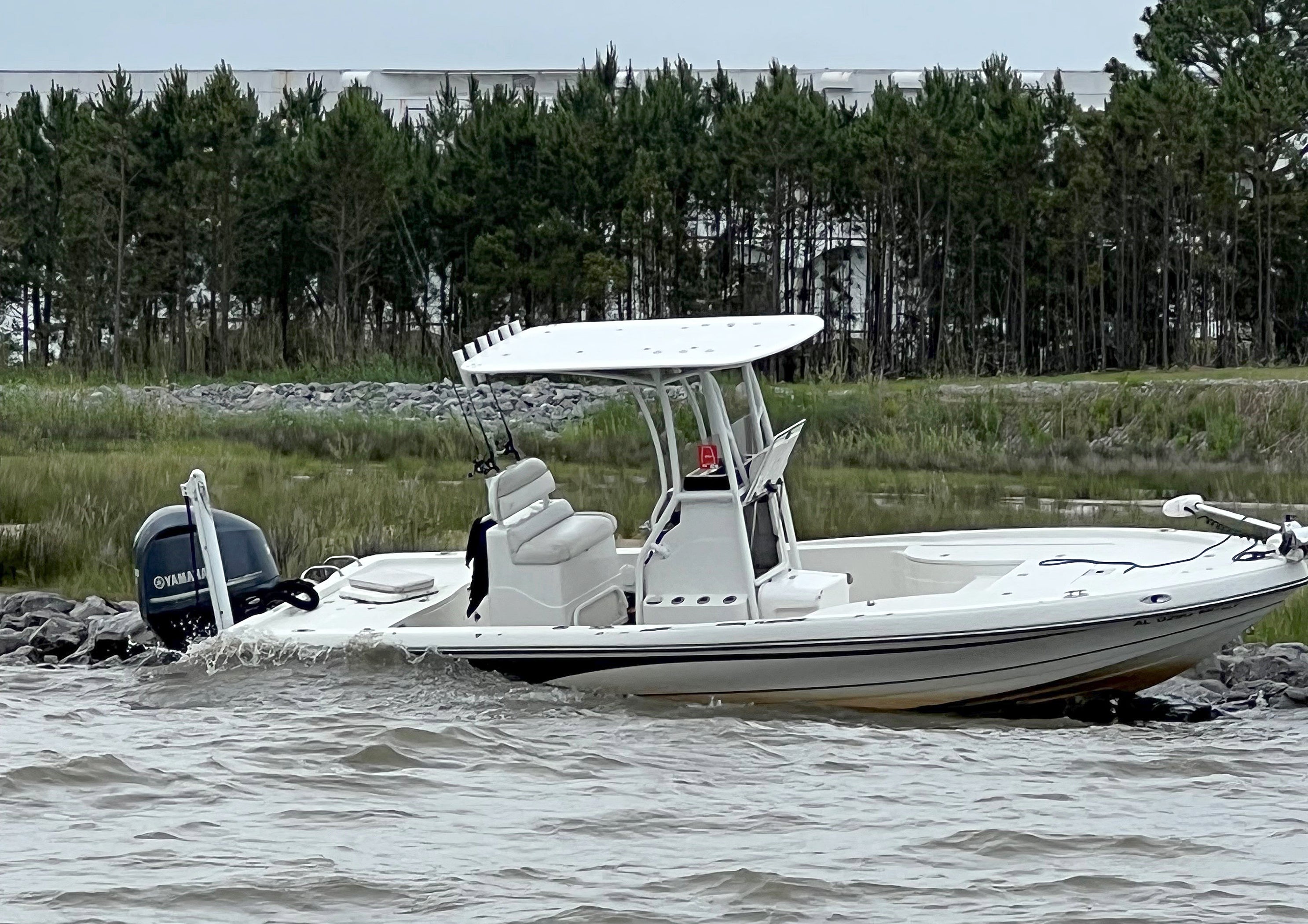By DAVID RAINER, Alabama Department of Conservation and Natural Resources
The U.S. Coast Guard rescue swimmer said only minutes remained before he reached the point of no return. Kevin Olmstead of Fairhope, a veteran angler and fishing guide for more than 20 years, had been in the water in Mississippi Sound for 10 hours after being dumped overboard by a wave as he tried to retrieve a life jacket.
Olmstead was unable to grab the life jacket before he went over the gunwale of his beloved Ranger bay boat, and the outboard, which he thought was in neutral, was still in gear. Olmstead’s tenacity and desire to return to his wife and kids kept him hanging on despite the rough water and effects of hypothermia.
“I told my story because I didn’t want to draw attention to myself,” Olmstead said after numerous media outlets featured his tale of survival. “The story is ‘can I help someone?’ and not have to go through what I went through, because it was hell.”
Olmstead, 53, was wade fishing in the west end of Dauphin Island when he decided the conditions were getting too rough to stay. He got back in his beached boat and started what should have been a bumpy ride back to Fairhope.
“I was there by myself,” he said. “I shouldn’t have been over there in that kind of weather. I’m kicking myself for not making sure my throttle was in neutral before I unhooked my kill switch to put on a life jacket.
“I was in the Sound heading back to West Fowl River to cut off some time. It was getting rough. I eased the throttle back and thought it was in neutral. I unhooked my kill switch from my belt loop and stepped one foot out of the console to reach around and grab my life jacket. At that point, a wave hit the side of the boat and threw me in. As I came up, my head was almost bumping the boat. When I got my wits, I was looking straight at the ladder on the port side. I reached out to try to grab it. I got my index finger on my right hand over the ladder. As the boat pulled me, my finger slipped off.”
With wading boots on, he had no chance to catch the boat that was slowly moving away. He got out of the boots, but he knew he was in deep trouble.
“I went into panic mode really fast,” Olmstead said. “I knew I had put myself in the worst position I could put myself in. As soon as panic mode started, something calmed and I thought, ‘Now it’s survival mode. You can’t worry about what you just did. You can’t worry about what’s going to happen. I’ve got to figure out how to survive this.’”
Olmstead pulled his shorts off and tried to tie the ends of the legs to trap some air for flotation. It didn’t work, so he took his long-sleeved fishing shirt off and tied the sleeves to do the same.
“Meanwhile, it’s 3-foot waves out there,” he said. “I’m probably 2 miles from the only rig out there. I can’t see any poles or cans (channel markers) or anything out there. I might have had 3 inches of air in the ends of both of those sleeves, about the size of baseballs. I’m 135 pounds soaking wet. I held both sleeves against myself. I tested it with treading with my legs. I didn’t have to tread as hard to stay up.
“One of the hardest things was I was taking 3-foot waves over my head every two to three seconds. I was drinking a lot of saltwater, and I would have to hold my breath. The waves were trying to drown me.”
The tide was coming in at the time, but the waves were rolling in from the north, counteracting the effects of the tide.
“An hour went by, and I made it,” Olmstead said. “Then three hours went by, and I thought, ‘I’m still here.’ I had to be my own drill sergeant that day. I had to pump myself up. I had to clear my mind of any negative thoughts. Negativity wasn’t going to help me survive. And I talked to my kids and my wife, like we were sitting on the couch; anything I could do to keep myself calm as possible.”








